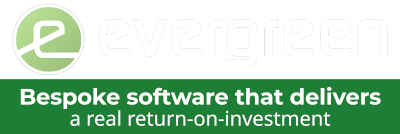A to Z Top Tips for Successful Email Marketing
13th May 2014 :: Author: Andrew Cope, Managing Director, Evergreen
Whether your marketing goal is to acquire new customers, convert prospects to first-time buyers, retain loyal customers or simply enhance customer satisfaction and brand loyalty, read our A-Z top tips for successful email marketing:
A is for Auto-responders. Auto responders or 'follow-up messages' are a great way of building a relationship with responders and finding out more about their likes and dislikes. Send them a welcome email when they sign up, send them a coupon or special offer on their birthday or on the anniversary of them joining you as a customer.
B is for Bounces. Monitor your bounce rates after each campaign. Soft bounces are those emails that exist but could not be delivered. This can be for a variety of reasons, from the recipients server being too busy at the time or if the recipient is away and an 'out of office reply' is automatically generated. Hard bounces are those that are totally undeliverable and should be removed immediately. You can try sending your campaign again to the soft bouncers and to minimise hard bounces, inspect your lists before you start your campaign to ensure that email addresses look correct.
C is for Click-through Rates and Call to Action. How many people clicked links in your email? Click-through rates vary according to industry sector but an average click-through rate is between 3% and 8%. Monitor your click-through rates over time and if they are dropping, experiment with the number of links used, the use of product photos for each link, the wording of each link and segmenting your list, so that recipients receive more focused emails and therefore, more links that are relevant. Use your CRM software to set up dashboards to analyse open and click through rates.
All your email marketing efforts will be in vain if you leave it up to the customer to figure out what they need to do next. Give your subscriber a specific action to take once they have absorbed your email content. Include a strong call to action that tells the recipient what you want them to do (i.e. sign up, join, buy, etc.) and place it above the fold (top 250 pixels). Identify calls to action with a graphic icon and/or within a blue underlined URL link.
D is for Delivery. Many ISPs block millions of spam messages every day based on content alone. Spam filters don't like words such as 'free' and 'win' and and so should be either used sparingly or if possible completely avoided by using synonymns. There are many free websites which can check your spam score rating but be aware that they all have their own scoring charts, so make sure you are aware of which score is good and which is bad. Try www.mailtester.com or www.contactology.com
E is for Expectations. Manage your subscriber expectations. After they've signed up, tell your recipients what type of content they can expect and how often they can expect to hear from you.
F is for Frequency. There is no hard and fast rule about how often to send emails to your target list as frequency varies greatly from one industry to the next. Balancing the frequency of your messages is extremely important. If you don’t send enough messages, it is difficult to remain in the forefront of your customer’s mind and be considered when they are ready to act. If you send too many, you may annoy your recipient and cause them to unsubscribe. Ask your subscribers for their preferences when they sign up.
G is for Graphics. Graphics are great but resist the temptation to build your messages using only images as large images are often slow to download. When using images, use ALT tags as component of tag. This will ensure copy shows up in place of the image for those recipients who have their image reader turned “off” or the reader is set “off” as a default.
H is for HTML. Should you send your email newsletters in HTML format, plain text format or both? Ideally send a text version along with your HTML version as not only can this help reduce your Spam score but also many recipients have their emails set to 'plain text only', particularly for those accessing their emails by mobile phone. Without a text version, the message can either show up blank or show up as garbled HTML code for the percentage of recipients who cannot view HTML messages.
I is for Incentives. To grow your database and encourage visitors to your website offer potential subscribers an incentive to sign up to your mailing list such as a free report, service or discount voucher.
J is for Junk Mail. An increasing number of ISPs are starting to block all email from being delivered that are not approved in advance by recipients. In order to remind your clients to take the step of adding your 'From Address' to their address book, add a single, explanatory sentence at the top or bottom of your emails.
K is for Know your audience. Always ensure that you have up to date data lists to work with. Cleanse your lists regularly and keep your data lists updated with client preferences. Make sure that your data is hosted securely in a robust CRM so that you remain compliant to current data protection legislation and can manage your records promptly and accurately.
L is for Lists. Alongside general emails, send out targeted emails by segmenting your list. By dividing your database either by interest or demographic, you will appeal to the needs of your customer and improve your sales results. Once built, a permission-based email list will be one of the most valuable tools in your marketing strategy.
M is for Mobile Friendly. The number of people opening their emails using their mobile phones is growing rapidly. Think about your creative for both desktop computers and mobiles. Most email newsletter templates are designed with a fixed width between 500-600 pixels but mobile email readers are much smaller than this. You can include a mobile friendly URL link at the very top of an email, also known as the pre-header area. This would be a link to a hosted online text version of your email that is optimised for mobile users with limited text and images. Use a single column ladder design, set all text to align to the left do it appears on the left side of the mobile device, set a min font size of 12pt for body copy and 20 pt for headlines and allow about 10 pixels around a clickable link/button to allow clumsy fingers to access.
N is for No-reply addresses. Always use an email address that recipients can reply to should they have a query, question or comment and make sure that the email address you use for this is monitored and emails received are actioned promptly.
O is for Opt-in. Always use permission based data that has been double opted in. i.e. Those who signed up to receive your newsletter and have verified by email to confirm this.
P is for Personalisation. Personalising your emails is generally a powerful way of improving open rates and response rates. e.g. Instead of having a generic salutation, such as 'Dear customer', you can include each person's name automatically in emails by inserting % either side of the name field. The name that will populate in the salutation is whatever you have in your database. This could be either just their first name or title and surname. e.g. Dear %name%, would appear as Dear John, or Dear Mr Smith. You can expand your personalisation further by using mail merge functions to highlight products that clients have bought in the past, when they have bought them etc. to thank them for their past purchases and recommend other similar products that they may be interested in. The amount of personalisation that is possible is dependent on the complexity of your database.
Q is for Questions. Give your recipients choices when they sign up to receive your email newsletters. How frequently would they like to receive emails and what content they would like to see. Are they interested in special offers, general product information or editorial-type content?
R is for Return On Investment. How should you measure the success of your email marketing campaign? Ultimately this will depend on your KPI's. However, it is essential to compare campaigns by percentage rates, rather than hard numbers. That way you can compare apples with apples, regardless of volume sent.
S is for Subject Lines. Keep subject lines to a length of 40-50 characters or less to maximise impact. Use the 'pipe' | symbol to separate ideas and shorten your message. Front-load your subject-line with compelling words and/or branding at the beginning. Use simple and plain words – concisely communicate why someone would want to open your message and keep your subject line short. Don't inadvertently trigger spam filters using all capitals or repeated exclamation marks.
T is for Test, Test and Test Again. Create test email accounts or use existing ones in various applications such as Gmail, Yahoo, Outlook, Hotmail etc. and send a test email to each of these accounts. This will allow you to see if your email made it beyond the email provider's spam filter and also see how the email looks in the inbox, reading pane and when opened as this various enormously between providers. As well as testing for spam and how your email will look in different email accounts, you should also test your subject lines and which days/times work best for your audience.
U is for Unsubscribe. What's your unsubscribe rate after each campaign? Less than 1% is considered average for lists that are contacted regularly and well maintained. Unsubscribe rates can be a lot higher if you are sending emails to recipients for the first time or if you send out your newsletters infrequently. If you see your unsubscribe rates rising over time, re-evaluate the content and try sending emails more or less frequently. Make sure that your emails always include an unsubscribe option and that you action any unsubscribers promptly.
V is for Verification. Verifying who an email has been delivered from is important as it symbolises trust and encourages the recipient to open the email without fear of it being from an unsafe source. Ensure the delivery and reply addresses match and it is easy for the recipient to establish who the email has been sent by.
W is for Web Form. Consider creating different web forms and try out each one on your website to see which gets the highest number of new subscribers.
X eXpert advice. No time for email marketing campaigns? Not sure how to get the best from the data that you have? Contact an email marketing specialist who can give you the best advice to get the most from your email marketing campaigns or manage the campaigns for you.
Y is for YouTube. When you make a YouTube video, encourage subscribers to tell their friends about it my including a share button in your email newsletter. Large numbers of views of your YouTube video will have a positive impact on your SEO.
And Finally....
Z is for Zzzzz – Don't make your audience fall asleep! As we all know, content is king so make sure that the content of your emails is either interesting, useful or relevant or better still all three!
If you need a customised email marketing platform integrated into your CRM or need help with email marketing strategy and campaign management, contact Evergreen.

 Call us today on
Call us today on 

